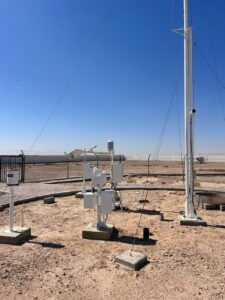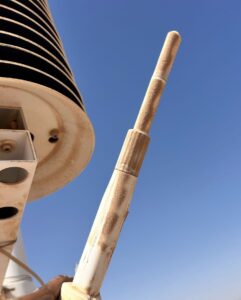Protecting Sensors = Accurate Forecasts

Weather sensors are the “eyes” we use to observe temperature, humidity, wind, and rain. But like any sensitive instrument, they’re not immune to nature’s influence.
Sunlight can heat them up. Dust can clog their air paths. Moisture can throw off readings. That’s why smart protection is essential.
What Can Affect Sensor Accuracy?
- Direct sunlight: Raises the sensor’s own temperature and leads to false readings.
- Hot surfaces: Asphalt or walls can reflect heat toward the sensor, causing inaccurate data.
- Dust and debris: Cover sensitive parts and block proper air interaction.
- High humidity: May cause condensation that temporarily skews results.
- Insects or bird nests: Can block vents or obstruct small moving components.

What is the Solution?
Radiation Shield
- Typically looks like stacked white discs surrounding the sensor.
- Blocks sunlight but allows air to flow freely.
- Shields the sensor from heat without interfering with ventilation.
- Essential for temperature and humidity sensors.
Correct Installation Location Keep away from walls, air conditioners, and artificial heat sources.
- Mount above natural ground (soil or grass), not concrete.
- Choose an open spot with good airflow.
Regular Cleaning and Inspection
- Remove dust, insects, or bird droppings from the sensor.
- Check that the radiation shield is intact and clean.
- Ensure sensors aren’t exposed to direct spray or freezing conditions.
What If We Don’t Protect the Sensor?
- You’ll get unrealistic temperature readings — too high or too low.
- Weather forecasts become misleading and unreliable.
- This affects:
- Severe weather alerts
- Accurate airport weather data
- Agriculture and health decisions based on weather
In Summary
Weather sensors are incredibly accurate — but also very sensitive.
To get the best from them, they need protection from sunlight, dust, and the harsh environment.
Because the clearer the “eye,” the sharper and more reliable our view of the weather.
